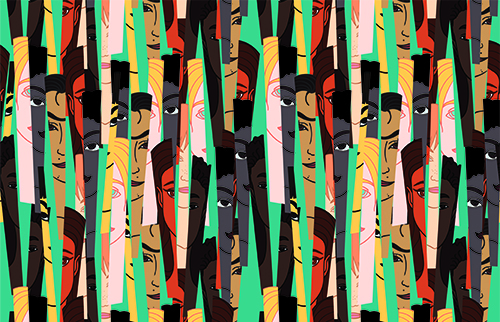Allies and Champions
Does this scene seem familiar?
Marie (not her real name), a white woman sitting close enough to touch me, reached out, took my arm and said to me, “Inez, when I see you, I do not see color. I just see your beautiful soul.” Crash! My face must have shown what I was feeling, because she quickly jiggled my forearm, and said, “I mean that as a compliment!”
I thought you might recognize that kind of exchange as happening in your life, too. But how about this reply:
I found Marie, took her aside, and asked, “Marie, can we talk?” She looked relieved and hopeful. Then I asked: “Have you ever been the first woman to do anything either in church or as a professional?”
Marie’s bright, blue eyes seemed to smile. She nodded, saying: “Oh yes! I was the first woman elected to the elders’ board at the church!”
“Wow,” I responded, “That is impressive!”
“Oh, yes, the men didn’t think I could handle it, but I really showed them!” She beamed.
“I’ll bet! You can still remember what that was like, can’t you?” I responded.
She nodded again.
“So if one of the men on the elders’ board had turned to you one day and said, ‘Marie, when I look at you I do not see a woman,’ would you have taken that as a compliment?”
Marie’s face blanched. An understanding light appeared in her eyes, and she fell into my waiting arms. “I am so sorry.”
“Yes, Marie,” I said. “It is like that.”
This example is from a January 2016 article in Sojourners by Inez Torrez Davis titled “How to Erase A Person”. She describes herself as an “Indigenous Latina” charged with educating white women about racism in an almost exclusively white congregation. As she explains: “Intersectionality — how two or more oppressive social identities overlap or intersect — is my day-to-day reality.”
If we are white and female and Catholic, we are challenged to confront our own privilege and racism as well as our second-rate position in Church leadership and ministry. If we are non-white and non-male gendered and Catholic, we have to actually live in and with these overlapping oppressions as additional burdens for the already overburdened.
Inez Torrez Davis reminded us of the need to understand intersectionality as a further reality that we who are white and trying to right racist wrongs and gender wrongs have to encompass in our mission. We, too, have to take on additional burdens and not rest on our own “good intentions” as adequate.
When we do take on the additional obligations, however, the reward will also be greater and the effect more powerful:
Learning about intersectionality achieves greater understanding and makes white women stronger allies. Understanding intersectionality is fundamental to the notion that white women and women of color can live, worship, and grow together in community. So much falls into the relationships between women of color and white women. We have all internalized the racial and gender messaging given by a patriarchal white construct.
Finally, she makes it personal in words we all need to hear, especially today:
For me, the intersection of racial oppression and gender oppression is a daily reality. What I need my white sisters to get is that, until you learn about structural and internalized racism, until you get in touch with both your oppression and your privilege, your good intentions will not stop the violence. Your good intentions do not make me feel welcome or safe.
I will say the same for the Church’s “good intentions.” They are too little, way too late, far too condescending, and woefully inadequate. Those of “other” genders and “other” races than white and male do not feel welcome or safe. Those who are living the intersection of the two feel the outcast and erasure even more.
Will the Church’s encounter with its own racism also force it to confront it sexism or vice versa? If so, we must first express a large dose of gratitude to those who experience and suffer both at once. Then we must act – tirelessly – as our own and each other’s allies and champions.


3 Responses
Patriarchy is the root cause of all artificial separations, all sectionalities, all forms of discrimination and oppression in religion and society.
http://thefearlessheart.org/wp-content/uploads/2017/12/From-Obedience-and-Shame-to-Freedom-and-Belonging.pdf
Alleluia Amen.
Ellie, Thanks you so much for sharing Inez’s wonderfully clear anecdote to illustrate how the privileged can be incredibly patronizing when they intend to be supportive to people whose intersecting identities have built a complex and constraining web around them that may be invisible from the outside. There is an old saying about the road to hell being paved with good intentions, and it really fits those of us struggling to become aware of our own privilege and connect as allies and equals with those who have different origins and experiences. We need to develop humility and listen more than we speak.